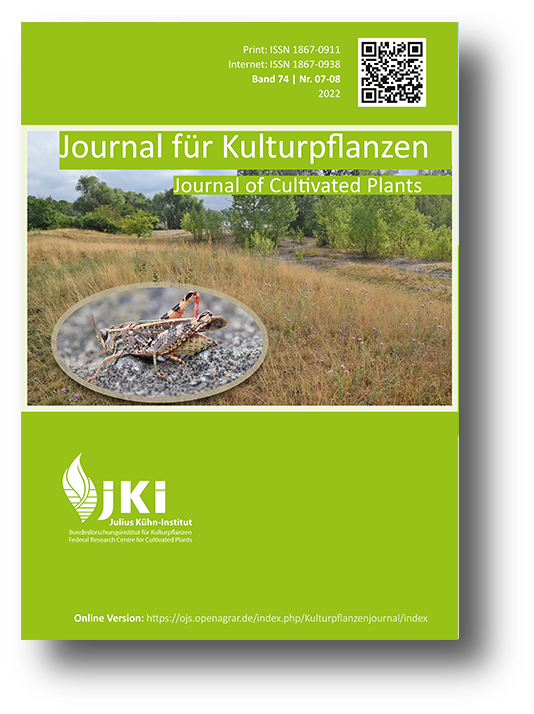Assessment of climate change-induced hazard potential of locusts (Acrididae) as pest for future German agriculture
DOI:
https://doi.org/10.5073/JfK.2022.07-08.01Keywords:
Crop Pest, Climate Change, Locusts, CLIMEX, Species Distribution Model, Calliptamus italicus, Locusta migratoria, Dociostaurus maroccanusAbstract
Climate change favors the establishment of new pests in Germany, which now find suitable habitats here due to the changed climate. Field locusts occur repeatedly as agricultural pests in southern European countries. Therefore, it is investigated whether the climate change-induced northward shift of warmer zones can create climatically suitable habitats for field locusts in Germany and whether agricultural areas can be affected by this. The CLIMEX software is used to model the possible distribution of the Italian locust (Calliptamus italicus (L., 1758)), the Moroccan locust (Dociostaurus maroccanus (Thunberg, 1815)) and the Migratory locust (Locusta migratoria (L., 1758)) for 20 locations in Germany in six scenarios. These result from the combination of the two observation periods 2021 – 2050 and 2071 – 2100 with the three climate projections RCP2.6, RCP4.5 and RCP8.5. Based on the study, C. italicus is expected to spread widely in Germany, whereas D. maroccanus and L. migratoria might form only small and local populations. Locust swarms can potentially threaten crop products on around 10 – 25% of the agricultural area in Germany at the sites considered, but are unlikely to occur, since the intensive use of grassland areas provides insufficient conditions for reproduction. The creation of lager fallow areas as part of environmental protection and climate adaptation measures could change this in the future. In addition, swarm formation in neighbouring countries and possible migration routes to Germany should be investigated. Furthermore, the development of concepts for prevention and intervention in the event of a locust invasion is recommended. Overall, however, a low risk potential of field locusts for German agriculture is currently assumed.
Downloads
Published
Issue
Section
License
Copyright (c) 2022 Carlotta Bauer, Alexander Fekete, Stefan Kühne, Peter Baufeld

This work is licensed under a Creative Commons Attribution 4.0 International License.
The content of the journal is licensed under the Creative Commons Attribution 4.0 License. Any user is free to share and adapt (remix, transform, build upon) the content as long as the original publication is attributed (authors, title, year, journal, issue, pages).
The copyright of the published work remains with the authors. The authors grant the Journal of Cultivated Plants, the Julius Kühn-Institut and the OpenAgrar repository the non-exclusive right to distribute and exploit the work.







